Mantua, located in the heart of the Po Valley, nestled between the calm waters of the lakes formed by the Mincio River that embrace it like a precious jewel, is a city that seems to have stepped out of a fairy tale. Known for its rich history, featuring such illustrious dynasties as the Gonzaga, Mantua is a city where every corner tells a story of art, power and beauty. It is no coincidence that the entire city, together with nearby Sabbioneta, was declared a UNESCO World Heritage Site in 2008, a recognition that testifies to its inestimable cultural and artistic value.
Mantua’s history is inextricably linked to that of the Gonzaga family, the powerful family that ruled the city for nearly four centuries, transforming it into one of the main centers of the Italian Renaissance. But Mantua is not only history. It is a vibrant city, where traditions blend with modernity, creating a unique and fascinating mixture. Walking through its streets means stepping back in time, immersing yourself in an atmosphere of bygone days, but still alive and pulsating. One of the most fascinating aspects of Mantua is its urban landscape, dominated by extraordinarily beautiful historic buildings, noble palaces, magnificent churches and welcoming squares. The historic center, with its maze of alleys and narrow streets, is a labyrinth of hidden treasures to be discovered. But Mantua is not only art and architecture. It is also a city where nature plays a key role. The three lakes that surround it (Lago Superiore, Lago di Mezzo, and Lago Inferiore), overlooked by several parks, offer scenery of rare beauty, perfect for a relaxing walk or a boat trip.
Mantua’s cultural offerings are equally rich. From museums to art galleries and the many cultural events that enliven the city throughout the year, there is never a dull moment for those who decide to visit. These include the exhibitions at Palazzo Ducale and Te Palace or Festivaletteratura, one of the most important literary festivals in Italy, which attracts thousands of fans from all over the world every year. But it is not only culture that makes Mantua a must-see destination. Mantuan cuisine, with its genuine flavors and ancient recipes, is another reason why this city is worth visiting. Pumpkin tortelli, risotto alla pilota, donkey stew, pike in sauce, torta sbrisolona, torta Elvezia, and tagliatelle cake are just some of the specialties you can enjoy in the many restaurants and trattorias in the center. So let’s go on a journey and discover ten must-see places in Mantua. Each of them represents a fundamental piece of the mosaic that makes up the soul of this city, an opportunity to immerse yourself in its millennial history, to admire its timeless art, to savor its culture. Pack your bags, Mantua is waiting for you! And if that’s not enough, also discover some little-known places in the city and what to see in the surrounding area. If you want an itinerary to discover the city instead, don’t miss this article.
The Ducal Palace in Mantua is one of the most impressive and fascinating architectural complexes in Italy. Built in several stages between the 13th and 17th centuries, this vast complex of buildings, courtyards, gardens and galleries was the official residence of the Gonzaga family, the lords of Mantua. Inside, one can admire absolute masterpieces of Renaissance art, including the celebrated Bridal Chamber, frescoed by Andrea Mantegna(read more about the Bridal Chamber here), considered one of the most important works of 15th-century Italian art. The Bridal Chamber itself, located in the Castle of San Giorgio (which is an integral part of the Ducal Palace), is undoubtedly the jewel of the palace. The frescoes, painted between 1465 and 1474, depict scenes from the life of the Gonzaga court and are characterized by striking realism and an innovative perspective for the time. The palace covers an area of about 35,000 square meters, with about a thousand rooms, many of them richly decorated. One of the distinctive features of the Ducal Palace is its architectural variety, the result of centuries of interventions and extensions. In fact, the palace includes buildings built in different eras, which blend harmoniously into a unique and striking whole. No less fascinating are the palace’s other rooms, such as the Gallery of the Months, the Gallery of the Exhibition, the Gallery of Metamorphosis (where the Wunderkammer of the Gonzagas has recently been remounted, with a modern layout) the Cortile della Cavallerizza and the Basilica Palatina of Santa Barbara. Each tells a piece of the history of the Gonzaga family and their court, a world of pomp, power and grandeur. To visit the Ducal Palace is to immerse oneself in a glorious past in which art and power were intertwined in an indissoluble union.
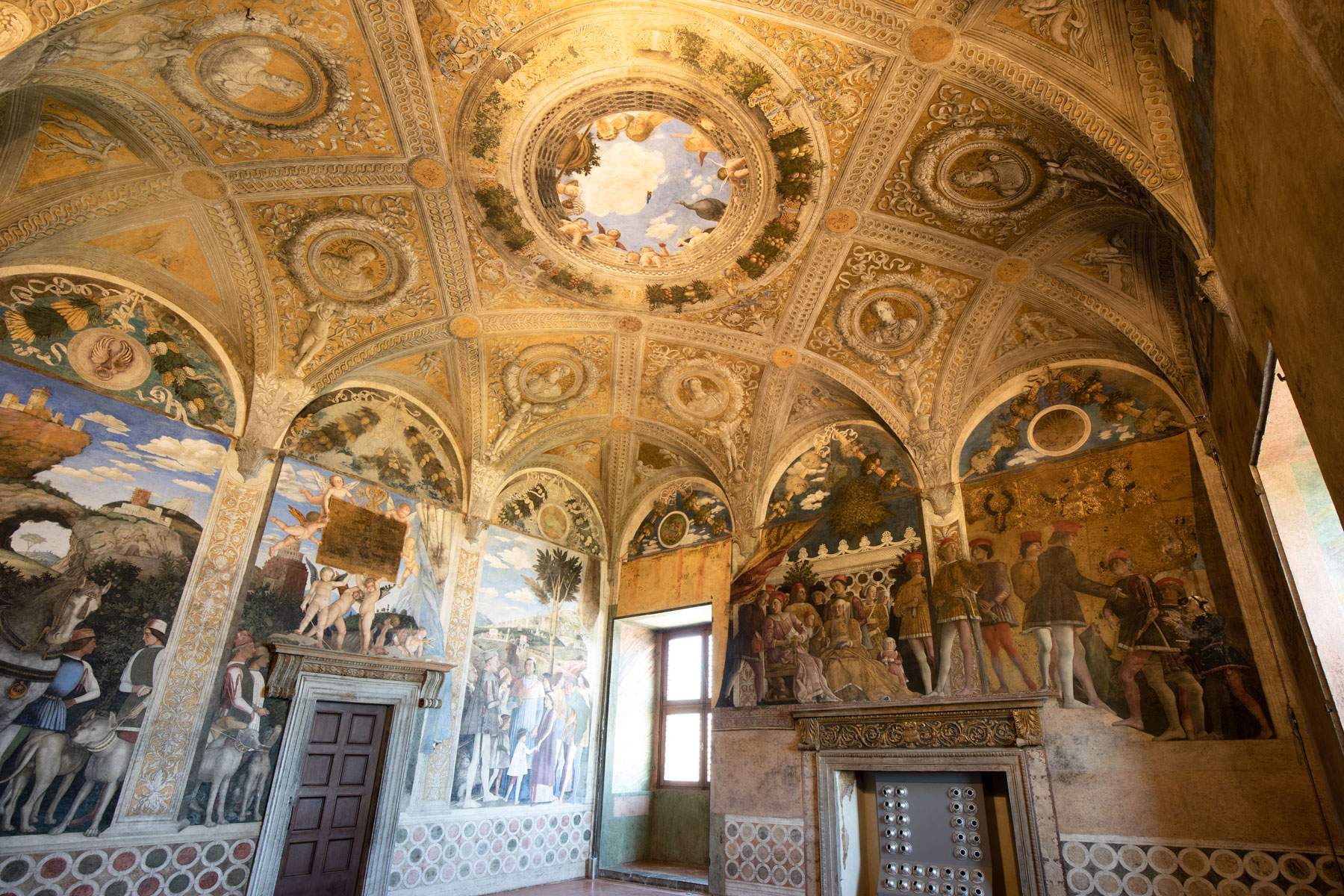
The Basilica of Sant’Andrea is one of the masterpieces of the Italian Renaissance and one of the most important churches in Mantua. Designed by Leon Battista Alberti, one of the greatest architects of the 15th century, the basilica is a perfect example of harmony and proportion, two fundamental principles of Renaissance architecture. Construction of the basilica began in 1472 and was not completed until the late 16th century, demonstrating its grandeur and the complexity of the project. The exterior of the basilica features an imposing facade, inspired by Roman triumphal arches, with a large central portal surmounted by a classical pediment. The interior, in the shape of a Latin cross, is dominated by a single large nave covered by a barrel vault, decorated with splendid frescoes and stucco work. The overall effect is that of a grand and luminous space, inviting meditation and recollection. One of the most important elements of the basilica is the chapel that houses the relic of the Precious Blood of Christ, a fragment of the earth bathed in Christ’s blood during the crucifixion. This relic, kept in a golden urn, is an object of great veneration and attracts thousands of pilgrims from all over the world every year. Also not to be missed is Andrea Mantegna’s Funeral Chapel, where another of his masterpieces is located: the Holy Family with the family of the Baptist. The Basilica of St. Andrew is a place of extraordinary beauty, where art, faith and architecture come together in a harmonious and evocative whole: a journey into the heart of the Italian Renaissance, discovering one of its greatest masterpieces.
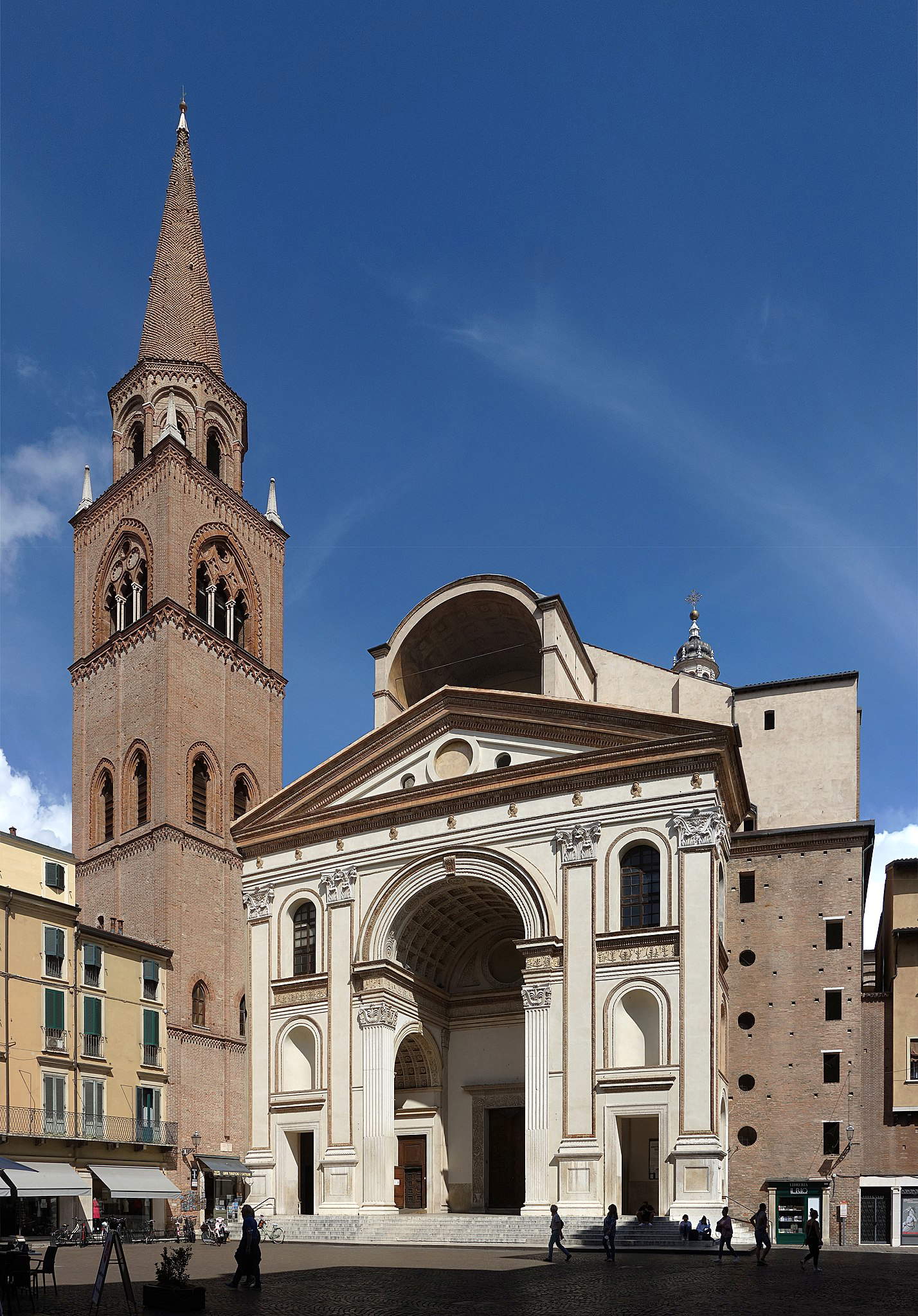
The Te Palace is one of the most original and fascinating works of Italian Mannerism. Built between 1524 and 1534 at the behest of Federico II Gonzaga, the palace was intended to become a pleasure residence, a place where the duke could retreat to leisure and entertain his guests. The project was entrusted to Giulio Romano, a pupil of Raphael, who created a masterpiece of architecture and decoration, in which imagination and excess come together in an ensemble of extraordinary originality. The building is organized around a large central courtyard, surrounded by loggias and porticoes decorated with stucco and frescoes. The interior of the palace is a riot of decoration, with entirely frescoed rooms recounting myths and legends of the ancient world. Prominent among them is the famous Chamber of the Giants, a monumental work in which Giulio Romano depicts the fall of the Giants, punished by Zeus for attempting to climb Olympus. The fresco, which covers all the walls and ceiling of the room, creates an unprecedented effect of movement and drama, engaging the viewer in a unique visual experience. Te Palace is a place where art and architecture reach levels of great sophistication and complexity. Every room, every detail is designed to amaze and enchant, in a continuous interplay between reality and fiction, between the earthly and mythological worlds. A visit to the Te Palace is an immersion in the fantastic world of Mannerism, a journey to a time when art was synonymous with wonder and surprise.
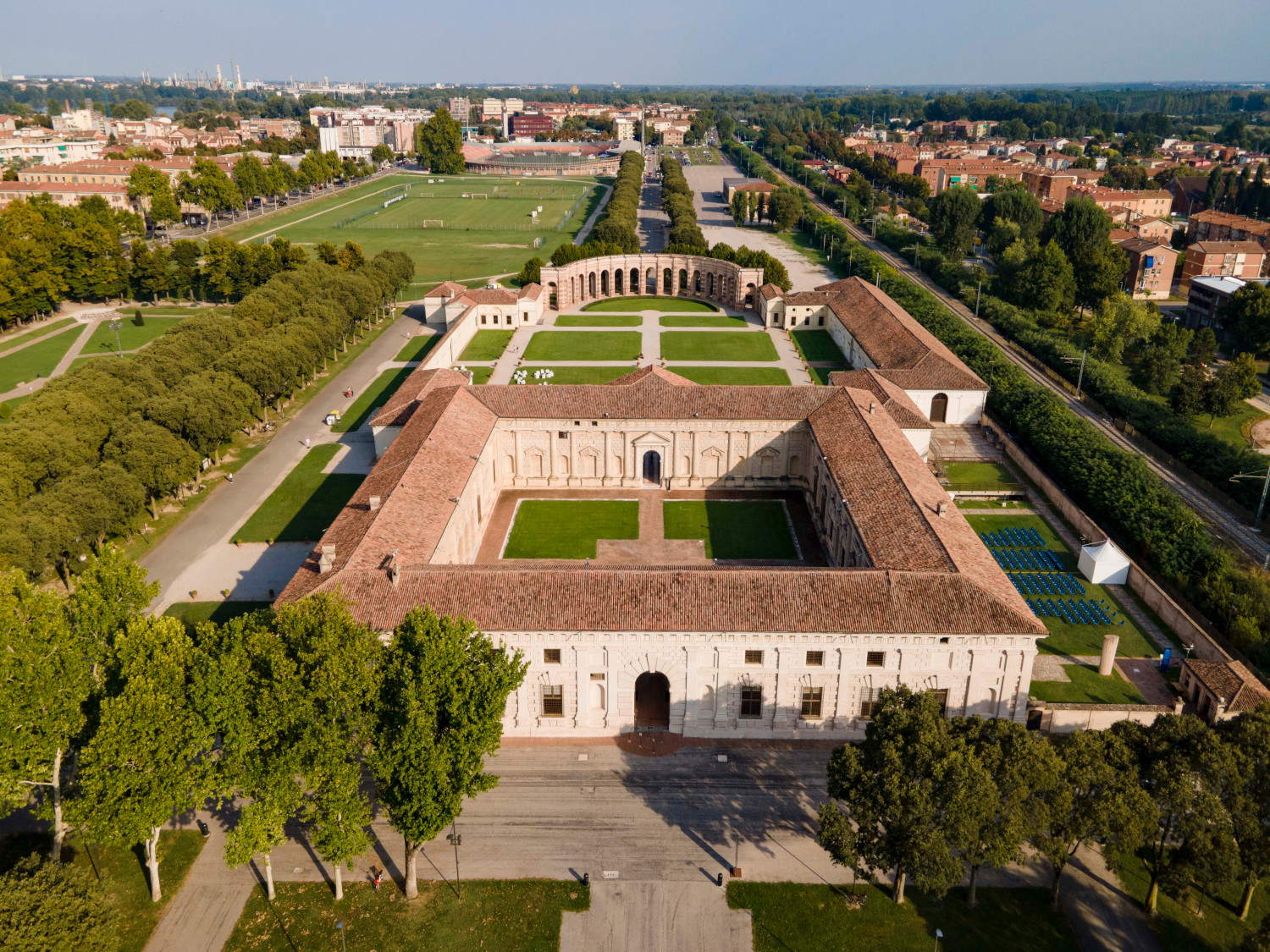
The Teatro Bibiena (also known as Teatro Scientifico, or Teatro Scientifico dell’Accademia) is a small masterpiece of Baroque architecture, located in the heart of Mantua. Built between 1767 and 1769 to a design by architect Antonio Galli Bibiena, the theater is known for its elegance and perfect proportions, making it one of the most successful examples of Italian-style theater. Its history is closely linked to music: on January 16, 1770, in fact, the young Wolfgang Amadeus Mozart, then just 14 years old, performed a concert that marked the beginning of his international career. The theater’s interior features a bell-shaped floor plan, with an elliptical hall surrounded by three tiers of boxes and a loggia above. The decorations, made of gilded stucco and frescoes, give the room an intimate and refined atmosphere, ideal for theatrical performances and chamber music concerts. The Teatro Bibiena is a hidden gem in the heart of Mantua, a place where time seems to have stopped, and where you can still breathe in the elegant and refined atmosphere of the 18th century. A visit to this theater is like a plunge into the history of music and architecture, in a setting that has seen some of the greatest artists in history pass by. A curiosity: the name “Teatro Scientifico” derives from the fact that it was initially designed to host meetings and conferences of scientific institutes: in fact, the patron of the theater was Count Carlo Ottavio di Colloredo, who at the time was rector of the Accademia dei Timidi, later reformed in 1767 and became the Accademia Virgiliana di Scienze, Lettere e Arti.

Piazza Sordello is the heart of Mantua, the place where the city’s history and daily life meet. Surrounded by some of Mantua’s most important historic buildings, including the Ducal Palace, St. Peter’s Cathedral, and the Bishop’s Palace, the square is named after the poet Sordello da Goito, who lived in the 13th century (and is also famous for his encounter with Virgil in Canto VI of Purgatory of Dante Alighieri’s Divine Comedy ), and has always played a central role in the life of the city. In the Middle Ages, it was the place where public ceremonies, tournaments and markets were held, and even today it is still the gathering place for citizens and tourists. Piazza Sordello is also an ideal starting point for exploring Mantua’s historic center. From here (there is a small paid parking lot, with continuous bustle, so it is not difficult to find a place), it is possible to easily reach the city’s main sights, walking through the narrow medieval streets that branch off from the square. Its cozy atmosphere, the palaces facing it, the restaurants and stores make it a must for anyone visiting Mantua.
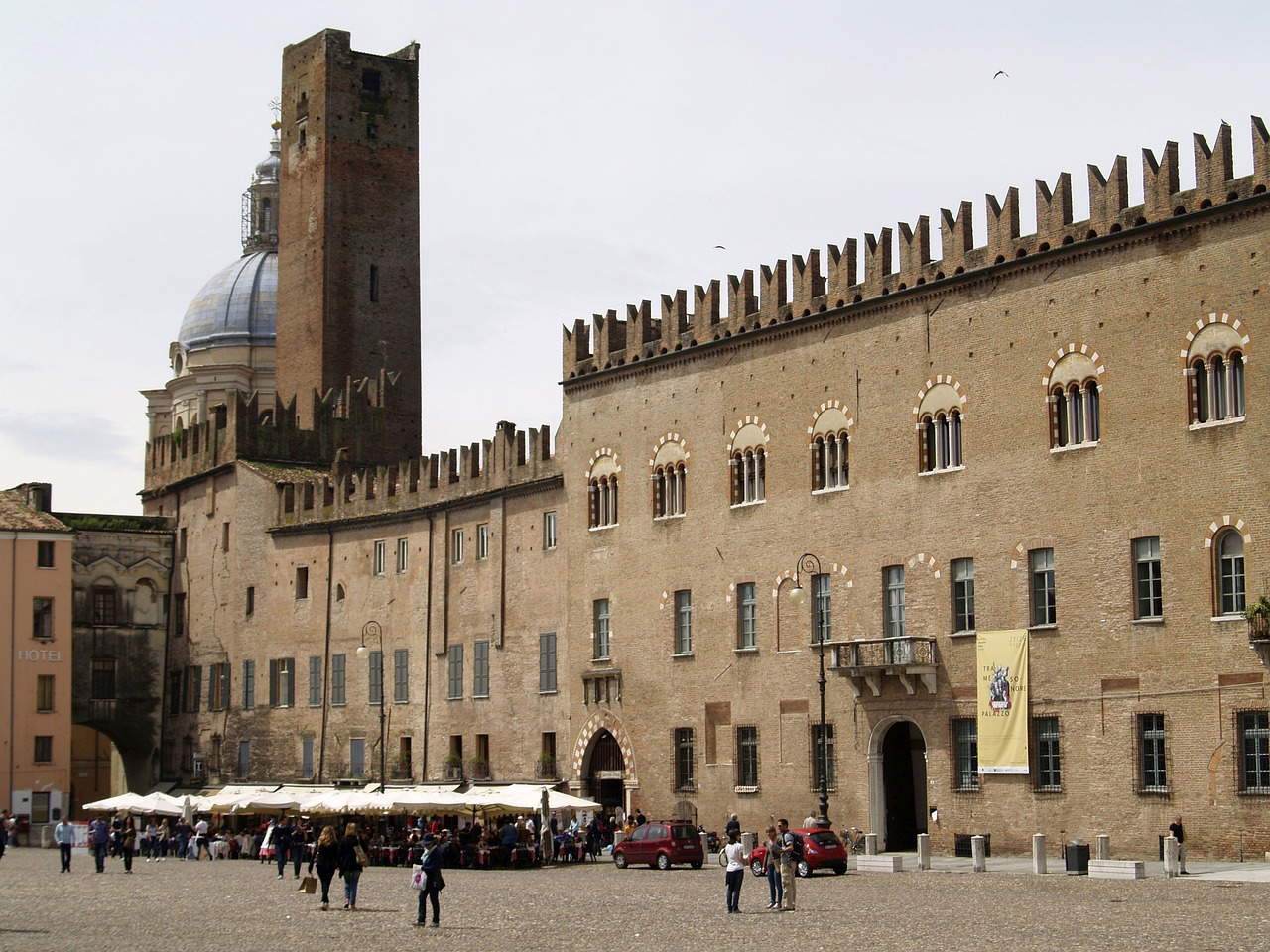
The Rotonda di San Lorenzo, located in Piazza delle Erbe, is the oldest church in Mantua, and one of the most significant examples of Romanesque architecture in Lombardy. Built in the 11th century, the church is distinguished by its circular plan, inspired by the Holy Sepulchre in Jerusalem, and its simple but imposing structure. The interior of the Rotonda is characterized by austere beauty, with its bare walls and columns supporting the central dome. Despite the many transformations it has undergone over the centuries, the church has retained much of its original structure, and is a valuable testimony to medieval history and art. Its intimate and evocative atmosphere makes it an ideal place for a pause for meditation and reflection.
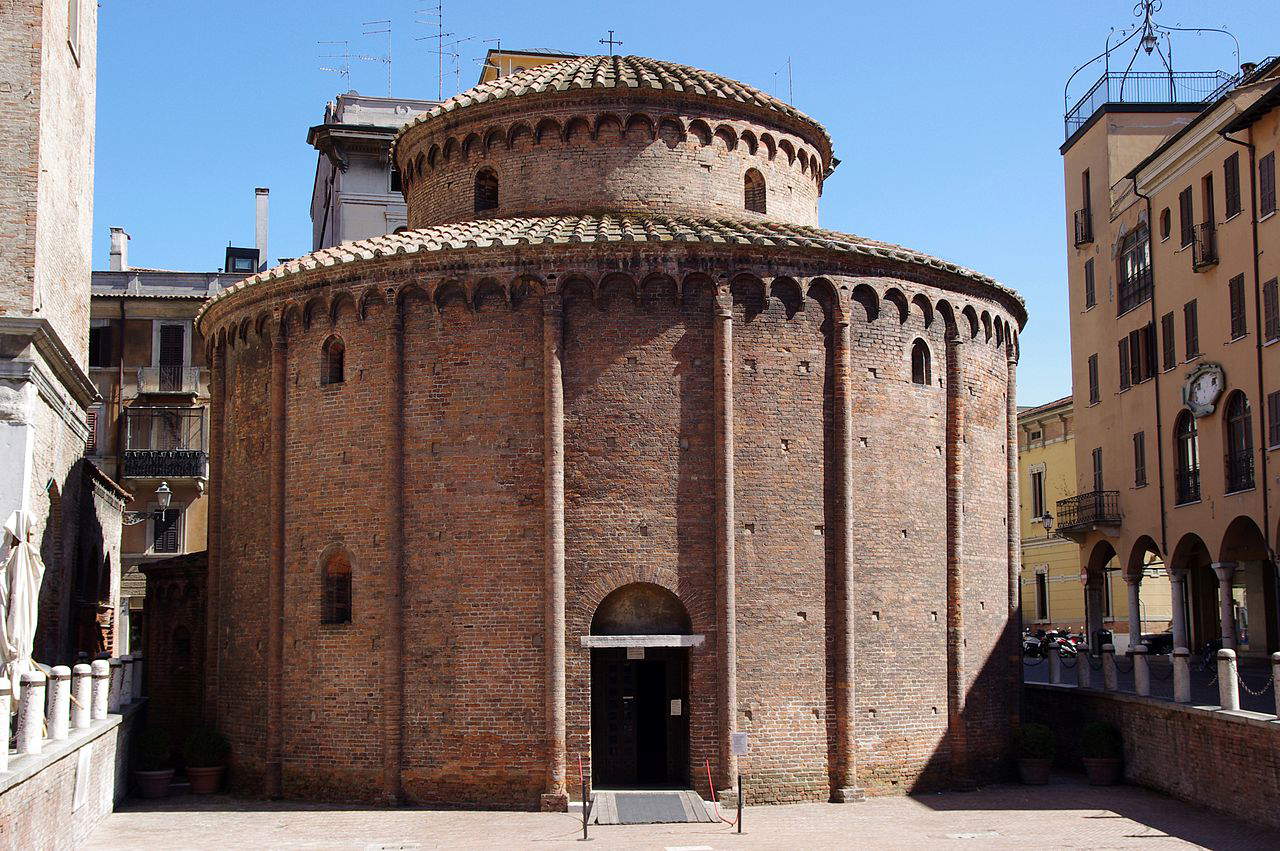
Located in Piazza delle Erbe, near the Rotonda di San Lorenzo, the Palazzo della Ragione is one of the oldest buildings in Mantua. Built around 1250, the palace was originally intended to house the city’s public assemblies and courts. Its imposing façade, decorated with mullioned windows with two lights and battlements (although its current appearance is due to 20th-century renovations, when the original façade was redone following architect Aldo Andreani’s design in 1942), is a typical example of Lombard Gothic architecture. Next to the Palazzo della Ragione stands the Clock Tower, built in 1473 to a design by Luca Fancelli, a follower of Leon Battista Alberti. The tower houses an astronomical clock made by astronomer Bartolomeo Manfredi, which, in addition to telling the time, indicates the phases of the moon and the signs of the zodiac. The clock is a true marvel of Renaissance technique, and is one of the symbols of the city. The Palazzo della Ragione and the Clock Tower are two of the most recognizable places in Mantua, telling the story of the city through their architecture and original functions. The Palazzo della Ragione, moreover, is now often used as a venue for important exhibitions.
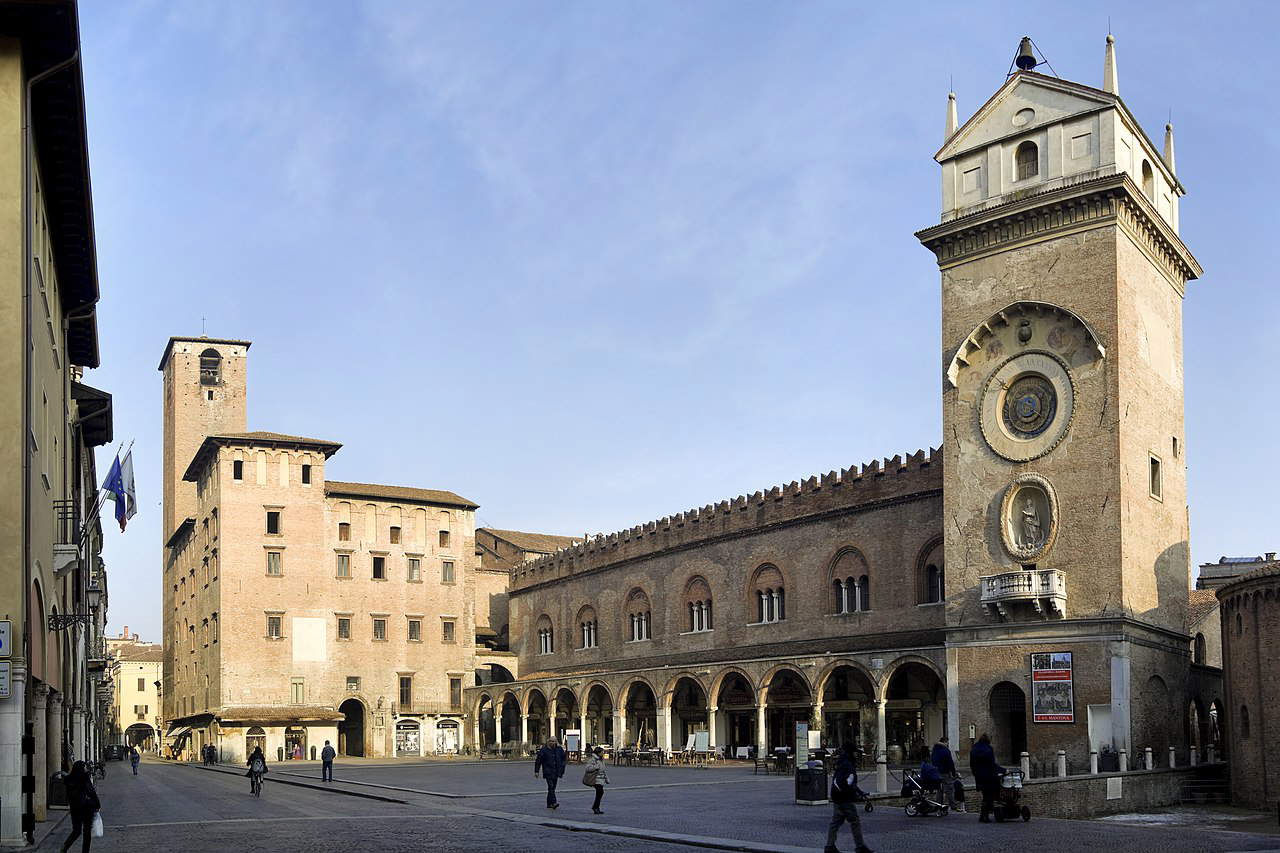
The Casa del Mantegna is one of the most interesting residences in Mantua, inextricably linked to the name of Andrea Mantegna, one of the greatest artists of the Renaissance. Built around 1476 to a design by Mantegna himself (he may have used it as a home and a studio), on land that was perhaps given to the artist as a reward for the good work he did on the Bridal Chamber, the house is distinguished by its circular floor plan, reminiscent of the classical architecture so beloved by the artist. The interior of the house is organized around a central courtyard, surrounded by a portico with Doric columns. The rooms, unfortunately, have lost much of their original decorations, but the architectural structure remains intact, bearing witness to the innovation and modernity of Mantegna’s thinking. Today, the Casa del Mantegna hosts exhibitions and cultural events, and is one of the most important places in the city for art and culture.
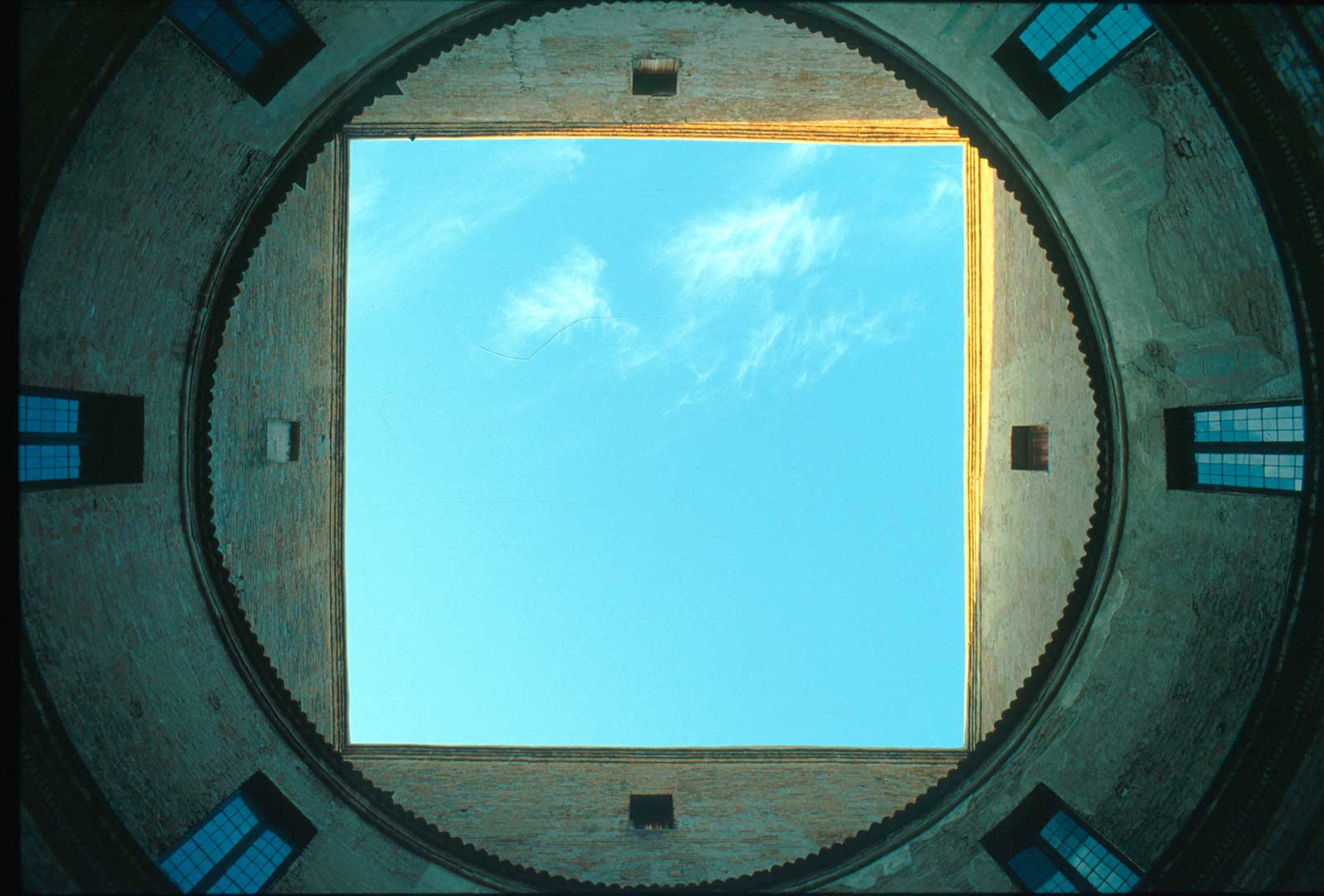
Palazzo d’Arco is one of the most fascinating historic residences in Mantua. Built at the end of the 18th century, the palace is a perfect example of a noble residence, with its original furnishings, art collections and halls decorated with stucco and frescoes. All still preserved as it once was. The museum thus offers a journey through time, discovering the daily life of an aristocratic family of the 18th century, the Counts of Arco. Among the most impressive rooms is the Diana Room, which houses one of the largest parts of the family art collection, and the Ancestors Gallery, where portraits of members of the d’Arco family over the centuries are displayed. A visit to the palace is an unmissable opportunity to discover one of the lesser-known aspects of Mantua, and to immerse oneself in the refined and luxurious atmosphere of aristocratic life. Then a visit to the Palazzina del Falconetto, which is located inside in the complex (it is accessed from the garden, usually before visiting Palazzo d’Arco: in fact, visits to the palace are always accompanied), is not to be missed: it is so called because it houses a spectacular cycle of frescoes from around 1510 attributed to the Veronese painter Giovanni Maria Falconetto, and which decorates the Sala dello Zodiaco with scenes inspired by all the zodiac signs, exceptionally preserved.
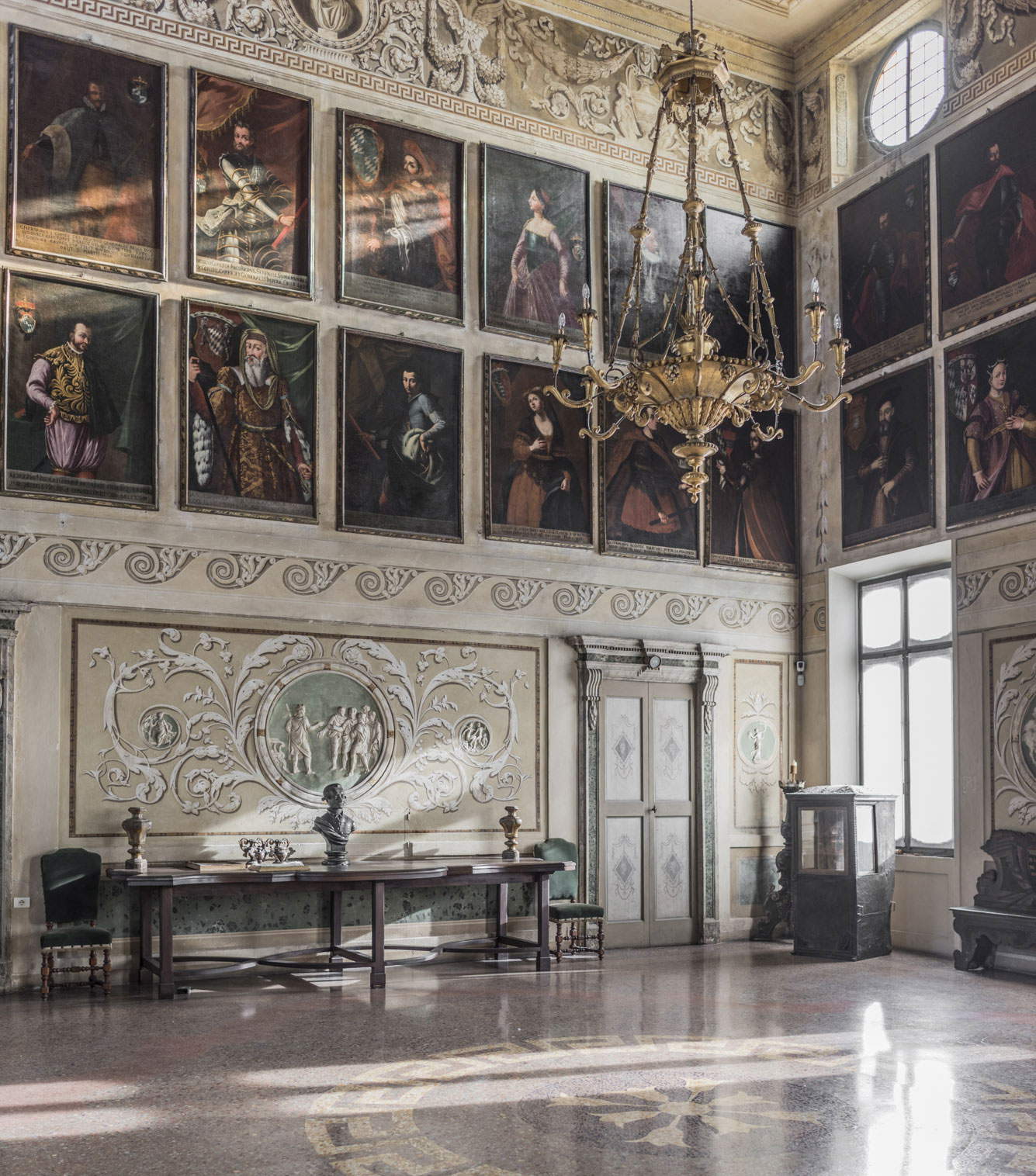
Mantua’s three lakes are among the most beautiful natural areas in Lombardy. Part of the Valli del Mincio Nature Reserve, the lakes are ideal for nature lovers and birdwatchers, thanks to their rich biodiversity. Their shores are the ideal place for a relaxing walk, surrounded by greenery and tranquility. From Lake Mezzo it is also possible to admire one of the most striking views of Mantua, with the city reflected in the calm waters of the lake, creating an image of rare beauty. One can walk along the shores of the lake by going to the parks that overlook it: the Belfiore Gardens (Lago Superiore), the Fraccalini Gardens, the Science Park (Lago di Mezzo), and the Marani Gardens (Lago Inferiore). Just outside the city, the Valli del Mincio Nature Reserve offers numerous hiking trails, allowing visitors to discover the local flora and fauna in an unspoiled natural environment. The lake and reserve are an oasis just a short walk from the center of Mantua, a place where nature reigns supreme and where it is possible to regenerate.
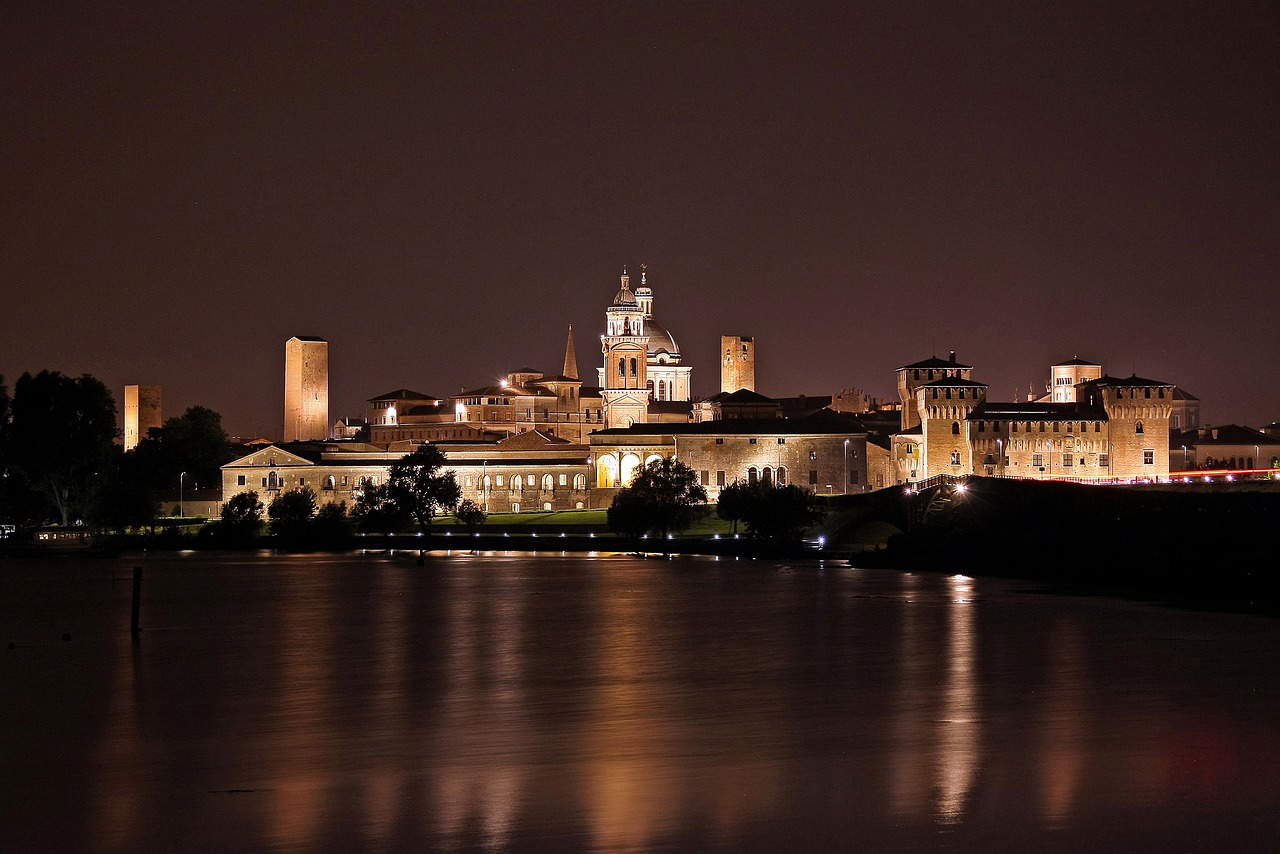
 |
| Mantua, what to see: the 10 places not to miss |
Warning: the translation into English of the original Italian article was created using automatic tools. We undertake to review all articles, but we do not guarantee the total absence of inaccuracies in the translation due to the program. You can find the original by clicking on the ITA button. If you find any mistake,please contact us.